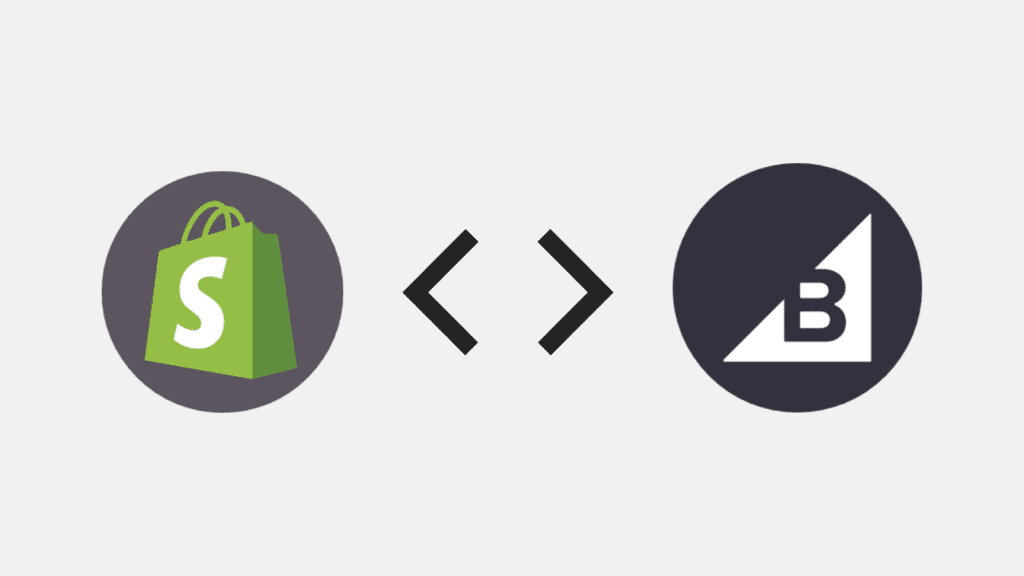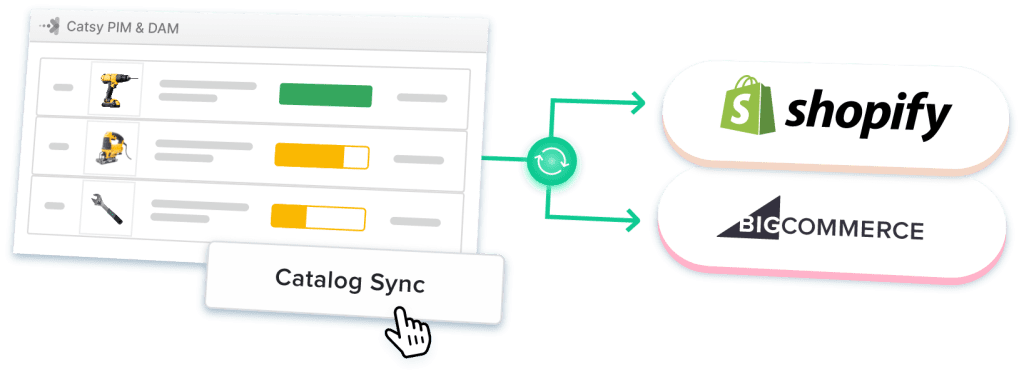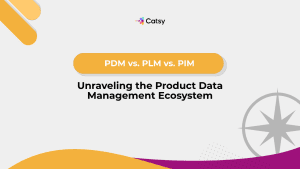Shopify vs. BigCommerce in 2024: How to Decide Between the Top eCommerce Platforms

- Shopify and BigCommerce are leading eCommerce platforms with subtle differences.
- Both platforms enable functional online stores aligned with short and long-term eCommerce strategies.
- Assessing product types, staff size, and appetite for apps vs. built-in features will indicate what platform best suits your needs.
In this Article
Choosing the right eCommerce platform can feel overwhelming with so many options on the market. Shopify vs BigCommerce stand out as two of the top solutions, but deciding between them isn’t easy either.
These two platforms serve similar purposes on the surface – providing the tools for merchants to create online stores. However, they differ in their target customers, built-in features, pricing models, and more. Knowing these distinctions is crucial before launching a store.
The good news is that assessing a few factors upfront about your business can clearly indicate whether Shopify or BigCommerce better suits your needs. Consider your product types, staff size, appetite for apps vs. built-ins, and other requirements. Outlining your must-haves guides you to pick the ideal platform aligned with your operations now and in the future.

Overview of the E-Commerce Technology Niche
The COVID-19 pandemic pushed the utilization of online marketplaces to record rates. According to a Semrush report, the global eCommerce industry traffic peaked at nearly 25 billion in early 2022.
Typically, you’d expect the excitement to die down once COVID-related restrictions began falling away. This happened but to a minimal extent. Semrush data indicates that traffic was up 8% in the first three months of 2023.
The stats are crazier when you shift the focus to sales. Statista data projects that eCommerce businesses worldwide will sell $3.1 trillion worth of goods and services in 2023. The revenue will grow at a 10.06% CAGR between 2023 and 2028, reaching nearly $5 trillion.
Accordingly, it shouldn’t be surprising that plenty of activity is happening in the eCommerce technology space. The niche is rapidly evolving as companies work hard to create a more streamlined market for the 2.64 billion online shoppers.
Of the 3.2 million eCommerce sites indexed by SimilarTech, nearly 2% run on top of WooCommerce technology. Shopify takes second place with 0.92%.
However, the scale shifts in Shopify’s favor when considering only the top one million sites. In this respect, Shopify commands a 4.7% market share, over 0.6% ahead of WooCommerce.
Although BigCommerce comes a distant 12th in the lineup, it powers close to 40,000 sites. Also, it is easy to excuse BigCommerce’s low adoption rates because the technology mainly focuses on business-to-business (B2B) usage scenarios.
Interesting things begin to happen when you break the analysis of eCommerce software further down based on what section of business they focus on. For example, an ECommerce Platforms analysis lists BigCommerce as the most popular solution for online B2B usage. On the other hand, eCommerceCEO ranks Shopify as the best platform for selling to consumers.
That is why you can say that Shopify and BigCommerce are the top eCommerce platforms this year and into 2024. However, how do you choose when faced with a Shopify vs BigCommerce decision?

Deciding Factors: Shopify vs BigCommerce
Apples vs Organes?
Ultimately, Shopify and BigCommerce serve the same purpose – they allow merchants to create a digital touchpoint for buyers. To that end, it shouldn’t be a question of which is which when choosing the ideal platform.
However, when your online shop goes live, a few things will emerge that speak to the differences between the platforms. This is when you know what platform you should have selected initially.
As always, you make better decisions when starting from a point of strength, which, in this case, is detailed knowledge of what each platform offers. To help make sense of this, here is how Shopify and BigCommerce compare.
Factor | Shopify | BigCommerce |
Pricing and plans |
|
|
Ease of use |
|
|
Sales and marketing capabilities |
|
|
Payment gateways and shipping |
|
|
Security measures and support |
|
|

Where Shopify Wins
If one thing is clear, Shopify does better in several areas than BigCommerce. How does the platform achieve this?
Supporting businesses with financing
Shopify has a clear advantage over BigCommerce in providing an enabling environment for businesses. It does this through the following features:
- Shopify Capital – Shopify offers eligible merchants (based in the United States) short-term financing through this feature. Merchants can receive funding quickly to help grow their business and pay it back through future sales. Loan amounts can range from $200 to $2 million.
- Partnerships with financing companies – Shopify partners with several third-party lenders and financing companies to connect their merchants to small business loans, advances, and other credit products tailored to eCommerce companies.
- Point-of-sale financing – Shopify’s retail hardware and POS systems allow merchants to offer financing options and split payments at checkout to increase average order value. Sellers can partner with third-party lenders and integrate those lending services into the checkout process.
In comparison, BigCommerce does not offer direct financing programs or lending partnerships. Companies would need to seek out third-party financing independently rather than have options integrated for them.
Discounted plans
SimilarTech data indicates there are 271 eCommerce platforms as of November 2023. In such a crowded space, it takes technique to take the lead. For Shopify, one of its tactics is extending discounts on subscription plans.
Shopify edges BigCommerce out in this area. Specifically, Shopify offers the following types of discounted or free plans for merchants:
- A 3-day free trial across five different plans (basic, Shopify for small businesses, advanced, starter, and retail), then a dollar per month for the first three months.
- The Basic Plan also comes with up to 77% shipping discount
- Merchants who would like to learn more about eCommerce and Shopify, in particular, can do so free of charge through Shopify Compass.
- Discounted nonprofit plans are available, as well as free transactions on Shopify Payments.
On the other hand, BigCommerce offers 15-day free trials for new merchants and three months of free usage if they sign up before the trial period elapses. It might seem that BigCommerce edges Shopify out, but there is more.
Once you sign up for a Shopify account, you get a 25% discount if you pay annually. In contrast, BigCommerce users will get a 10% discount on similar plans.
Therefore, in terms of reducing barriers to entry and making eCommerce more accessible to new businesses, Shopify is the leader with their comprehensive discounted plans.
Load time and page speed
An eCommerceCEO analysis puts Shopify stores at the head of the load time ranking – the stores’ average load time is 1.3 seconds. The closest ranked platform is Sellfy, whose stores load 0.01 seconds slower.
BigCommerce is a heavy application, given the list of features it provides. However, this comes at a cost; the average load time for BigCommerce stores is 2.2 seconds. The BigCommerce loading speed is within the acceptable range but is two times slower than Shopify.
Functional mobile app
Both Shopify and BigCommerce provide mobile apps, but they have subtle differences. Shopify provides the options for merchants to handle their stores on the go, making it more functional. Also, the Shopify app allows sellers to manage orders and reports.
On the other hand, BigCommerce offers one of the best mobile experiences with regard to built-in features. The vast number of app options and built-in features make BigCommerce easily scalable. But this comes at a cost.
BigCommerce’s feature-rich mobile app has a steep learning curve. You’d need months to get comfortable with the platform, whose trade-off is a quick launch of your business. In contrast, Shopify’s functionality means an easier learning curve.
Payment gateways
Shopify offers a proprietary integrated payment processing solution, Shopify Payments. Merchants can use it to seamlessly accept credit cards with competitive rates and no long-term commitments. Importantly, sellers incur lower costs when they choose Shopify’s payment gateways.
In addition to Shopify Payments, Shopify integrates with over one hundred traditional and alternative payment gateways globally (BigCommerce offers integrations with less than 70 payment gateways). These include major players like Stripe, PayPal, and Square, as well as region-specific options.
Then, there is Shopify POS. Shopify’s POS (point-of-sale) system for brick-and-mortar retailing comes with several integrated payment systems like tap, chip, pin, swipe, and mobile wallets. This reduces the need for extra hardware.
Although BigCommerce provides this functionality, the feature is not proprietary like Shopify’s. Instead, you’d have to set up third-party POS solutions like Stripe Terminal, Square, AmberPOS, ShopKeep, Heartland Retail, and Clover.
This means the specific functionality of your BigCommerce POS system varies depending on which third-party solution you integrate into your store. Shopify users can’t recognize such challenges.

Where BigCommerce Wins
BigCommerce also edges Shopify in some areas, including:
Built-in features
BigCommerce often comes with more built-in features out of the box, reducing the reliance on third-party apps. This includes:
- Blogging – BigCommerce includes a built-in blogging platform as part of its core features. This benefits businesses that want to integrate content marketing with their eCommerce strategy seamlessly. While Shopify does offer this functionality, some users may find that BigCommerce provides more robust and integrated blogging capabilities, reducing the need for additional third-party apps.
- Product options – BigCommerce provides several advanced product options, making it suitable for businesses with diverse product offerings. This includes features like product variants, options, and SKU management, allowing for more complex product configurations. Although you will find a similar breadth of product options on Shopify, some may find that BigCommerce’s product management system is more accommodating for businesses with intricate product catalogs.
- Seamless integration of features – With more built-in features, BigCommerce provides a more integrated and cohesive experience for users. This can lead to a smoother setup and operation of an online store without the complexities of managing multiple external integrations. On the other hand, Shopify’s app ecosystem is extensive, but integrating numerous apps may require additional effort and troubleshooting. Some users may prefer the convenience of having essential features seamlessly integrated from the start.
Pricing structure for high-volume merchants
BigCommerce is a B2B-facing eCommerce platform. So, you’d be right to assume that its pricing structure favors high-volume merchants. Specifically:
- No transaction fees – While Shopify Payments eliminates additional transaction fees, using external payment gateways incurs additional costs. High-volume merchants may find the transaction fees consequential. BigCommerce takes a different approach – it does not charge extra transaction fees, regardless of the payment gateway used. This means merchants with a high sales volume earn considerable cost savings.
- Enterprise plan – BigCommerce offers a customized Enterprise plan for mega-merchants doing over $50M in annual online sales. It has dedicated enterprise support, peak sales assistance, and global expansion features.
So, for any merchant projecting large volumes of monthly transactions, BigCommerce provides a much more cost-effective and scale-ready pricing structure without volume penalties. In contrast, Shopify can become very costly for huge merchants due to transaction fees.
Unlimited staff accounts
BigCommerce includes unlimited staff accounts with any of their paid plans. On the other hand, Shopify charges merchants extra monthly fees for adding staff beyond the base 15 users for advanced plans.
This can become a significant cost differential when managing a more extensive business team. Some key advantages of BigCommerce’s unlimited accounts include:
- No user management headaches – Merchants don’t have to worry about managing user seats or continuously adding and removing accounts. Any employees can be set up quickly.
- Lower overhead for bigger teams – For merchants with 10, 20, or more staff members that require platform access, BigCommerce saves on paying incrementally for every extra Shopify seat.
- Role flexibility – With unlimited accounts, BigCommerce stores gain more flexibility in segmenting access by having specialized roles across departments like inventory, shipping, marketing, etc.
The ability for merchants to add unlimited user accounts to assist in-store management is a clear win for enterprise-level BigCommerce stores. These organizations often have large teams and need robust staff coordination. It’s a critical cost advantage and administrative simplification over Shopify’s rigid per-seat pricing model.
Enterprise-grade features on lower tiers
Excellent observation. Even BigCommerce’s lower pricing tiers come equipped with more advanced enterprise-level features than Shopify:
- Real-time shipping quotes – BigCommerce stores can access live shipping rates from carriers like UPS, FedEx, and USPS starting on the Standard plan. Shopify requires a $299/month Shopify Advanced plan first.
- B2B functionality – The Standard BigCommerce plan enables B2B features like customer groups, QuickBooks syncing, and manual order uploads. Shopify offers little native B2B selling support on lower-tier plans. You’d have to climb to Shopify Plus to enjoy the capabilities to sell to other businesses.
So even smaller BigCommerce merchants can tap enterprise capacities, allowing them tremendous room to scale operations while paying less than Shopify Advanced.

Choosing the Right Platform for Your Business
Shopify and BigCommerce are wonderful products in their own right. That is why comparing them seems like splitting hairs.
However, differences exist, although subtle. Knowing these differences is invaluable and could be why your store meets performance targets. So, if each eCommerce software has clear advantages, how do you know what platform is right for your business?
These questions should bring clarity:
- What types of products do you intend to sell? Shopify offers a user-friendly route if you sell primarily goods targeted at end consumers. BigCommerce is ideal for complex products because it has more robust B2B features.
- Will you sell across multiple stores? Although both platforms allow merchants to open multiple storefronts, managing them in BigCommerce is more seamless than in Shopify.
- How large will your staff or team be? Shopify charges extra monthly per any staff account over 15 members for advanced plans. BigCommerce allows unlimited users at no added fees, enabling operational flexibility.
- Do you need built-in features or more apps? Shopify has a vaster app store, but BigCommerce offers more features natively.
- Do you have unique business requirements? Nonprofits, students, and teachers get discounted Shopify pricing, unavailable on BigCommerce.
Asking these strategic questions first is crucial. The resulting insights can guide you to determine if the Shopify or BigCommerce approach better aligns with your operational and business requirements now and in the future.
It helps if you can identify must-have features and probable sales trajectory, which allows you to pick the ideal platform.

How Catsy is Uniquely Suited for Both Platforms
Whichever platform you select to power your online store, you must find a separate solution to manage product content. A system for storing and managing product information and digital assets is necessary, regardless of your catalog length.
Handy tools like PIM software and digital asset management programs are the perfect fit for this job. A product information management (PIM) solution takes in all details about your products from all sources and stores them in a database. This database is accessible to everyone with proper authorization.
The database of a PIM tool is a central location, empowering businesses to distribute complete and accurate product data to sales channels, catalogs, websites, etc. Some solutions like Catsy can auto-generate PDFs of product data, enabling on-the-fly sharing of print versions of the data.
Similarly, digital asset management software stores digital files in a centralized hub. This way, it is easy to manage and update the assets and to ensure that all connected channels receive accurate images, videos, and documents.
Some advanced management solutions like Catsy integrate product information management software and DAM functionalities in one platform. This PIM and DAM integration brings many benefits, and the most crucial is the ability to map product attributes to assets seamlessly.
Catsy has advanced connectors that support both Shopify and BigCommerce. If nothing else, this versatility simplifies the decision about using either of the top eCommerce platforms.
On the one hand, Catsy Shopify PIM provides an industry-leading Shopify API that facilitates seamless communication between the two platforms. If you have multiple stores, you know that Shopify doesn’t offer native capabilities to manage them centrally. Catsy pulls down the walls among the stores, allowing you to centralize critical processes. For example, you can enrich assets in DAM and bulk edit images to meet Shopify’s high-res rules just once and syndicate the high-quality product content to up to five stores.
On the other hand, Catsy has purpose-built B2B features in BigCommerce PIM that fit perfectly into the BigCommerce ecosystem. For example, brands and distributors managing thousands of attributes can utilize Catsy to manage SKUs and share to all key B2B channels. Such as, BigCommerce, a branded digital catalog (via the brand portal), generate PDFs, and (for industrial brands), share with major distributors like Fastenal, Ferguson, MSC, and Grainger, and distribution platforms like AD and Zoro.
Conclusion
So, after going a few rounds with these two eCommerce heavyweights, it’s clear that both Shopify and BigCommerce pack an impressive punch! They can pretty much do it all when it comes to setting up functional online stores.
But let’s get real – you’ll probably not build two separate stores here. For most brands, it’ll come down to picking which platform best matches a particular direction and game plan from the get-go.
Do you want to sell to other businesses and want a store that offers all the features you might need? BigCommerce could be your choice. Going all out on a nimble site and an accompanying functional mobile app? Then maybe Shopify’s your pick.
See, the differences really come out in the details tailored to you. Once you figure out whether you’re selling to consumers or doing big business supplies, that’ll clue you in.
So sort out your must-haves first, then let the rest line up. That way, when your store’s raking in sales, you’ll just know you picked the one primed for your style from start to finish.
When it comes to Shopify vs BigCommerce, the right platform for you comes down to your business needs. The same is true for picking a DAM PIM solutions. Book a demo with Catsy today to learn how Catsy PIM and DAM systems is uniquely suitable for enriching product content for both Shopify and BigCommerce.
The main difference is that BigCommerce offers more built-in features tailored specifically to B2B eCommerce at lower pricing tiers than Shopify. However, both platforms facilitate selling B2B or B2C.
Shopify is typically considered easier to use for beginners. It has a simpler interface and faster setup. On the other hand, BigCommerce enables greater flexibility and customization but has a steeper learning curve.
Both offer hundreds of professionally designed themes of comparable quality. However, Shopify provides more themes focused on consumer products, while BigCommerce emphasizes sophisticated, flexible templates ideal for industrial suppliers but accommodating to all B2B/B2C product types.
Shopify offers Shopify Payments plus 100+ other gateways. BigCommerce integrates with 65+ major payment gateways supporting over 250 local payment methods globally.
Yes, both Shopify and BigCommerce enable creating coupons and running email/social promotions to offer percentage or dollar-off discounts. These sales capabilities are very comparable.




